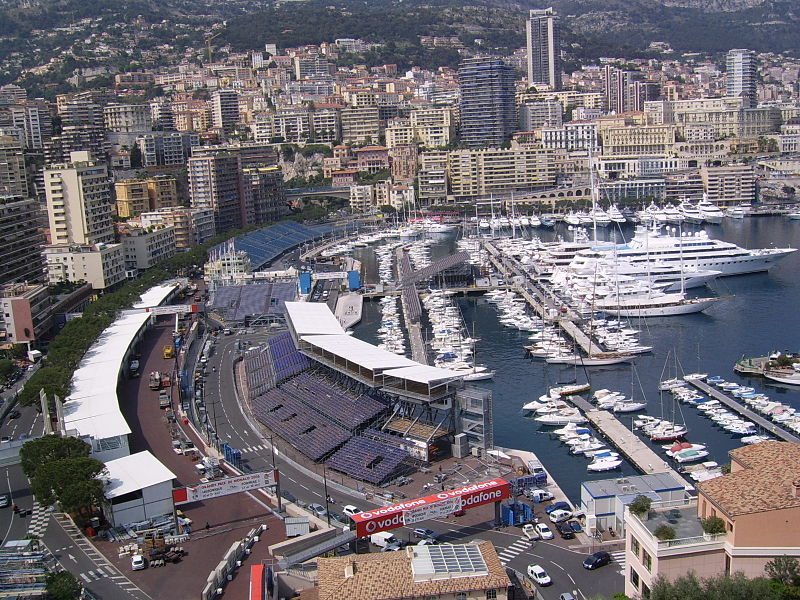What you may not be aware of is the little known, sister event called the Monte Carlo Grand Prix, the year long publishing competition of Monte Carlo codes. I’m going to give you a run down of the latest results. Get a seat in the grandstand and plugin your ear plugs!
Monte Carlo codes are surging in radiotherapy treatment planning. For a course at the Aarhus University Hospital I had to give [footnote1] a little review of MC codes in radiotherapy. Inspired by a talk given by Emiliano Spezi I did a little study done using the ISI web of knowledge which clearly shows this trend:
 |
| Number of publications on “Monte Carlo Treatment Planning”. Data for 2011 are still incomplete for obvious reasons. |
From the country of The United States of America there are the two participants, MCNP and MCNPX developed in the secret labs of the Bombs-R-Us factory (a.k.a. Los Alamos), now released to the public (with a few exclusions) against a modest fee. MCNP helps physicists transporting neutrons as well as photon and electrons. The grand old MNCP brings along its more recent offspring MCNPX which also can transport heavy ions!
Just of north of the US, the Canadian National Research Council funded the development of EGS4/EGSnrc and as a courtesy to our medical minded people BEAMnrc was developed which is particularly suited for simulations of linear accelerators for radiation therapy. Rumours say that this nifty product is based on US technology from University of Wisconsin, ‘traitors’ some might argue, I’d say this is a remarkable example of pan American friendship!
The Japanese people, known for their industrial know-how, diligence and incomprehensible machine translated manuals contribute with this gemstone of technology: the PHITS multi purpose particle transport vehicle... sorry... code, maintained by the Japanese Atomic Energy Agency! Jovial attitude to technology breeds wonderful gadgets, often decades ahead of what eventually will appear in Europe.
Finally, and being among us for a while are the diligent efforts of our European friends in University of Barcelona in Spain. Hola PENELOPE! PENELOPE can transport photons and electrons, evil tongues may even say much faster and smoother than our Canadian opponents. Let the masses judge how well they perform on the curved streets of Monaco.
Anyway, the race started many years ago and is still going on, let us see the current results:
 |
| Number of publications on various MC codes (not restricted to therapy planning) |
Clearly MCNP has been roaring through the Mediterranean streets long before computers became mainstream and when 1 MByte was still an unbelievable amount of memory. It would have been a dull race, if EGS4 had not slowly appeared on the horizon. Geant4 was not conceived of when FLUKA already had an early start. Both Geant4 and FLUKA are developed at CERN, which makes their performance particularly exciting. Geant3 does not even appear here, it had a trauma from an earlier rally - it might recover, but bones tend to heal slowly at that age.
The fiery tempered Spanish PENELOPE and the latest ace from the United States MCNPX entered the rally roughly at the same time, and here the race gets really exciting! Let us take a closer look at the last 10 years. All codes are surging, so I will plot it relative to the total amount of publications per year:
 |
| The Monte Carlo Particle Transportation Grand Prix, during last 10 years. |
It’s clearly a close race between the elderly and not-so-elderly codes. MCNP is clearly losing against its younger offspring MCPNX which also offers heavy ion transport. However, it is difficult to hide that MCNPX is loosing towards Geant4. The good news for MCNP is that it will be merging the MCNPX code base so it will get a boost of sorts! The success of Geant4 is truly amazing! Even if Geant4 cars are complicated, DIY affairs, the possibility to have total freedom with modding your car, giving it personal style, seems to attract a solid customer base.
FLUKA clearly shows a remarkably constant relative user base, going steady, going strong. But woo-hoo... whats happening with EGS4? The medical physicists came out of their closet declaring themselves as BEAMnrc users, and EGS4 is superseded by EGSnrc... 2011 could be one of the last years we hear of EGS4, but no-one will really miss it, we’ve got EGSnrc and BEAMnrc.
Trailing still is PHITS. PHITS users have still not published this year (2011) at the time writing these lines, but obviously I would not be surprised if it suddenly might come into play. Hopefully Japanese physicists will find time to catchup after they fix their issues with their nuclear power plants.
Where are the Russians? I can see smoke coming up on the horizon somewhere behind, I hope it is not a fire, but just a demonstration of the new engine. I am confident the Russian mechanics (with some aid from their friends in Aarhus :-) are working on it, and we soon will see fast SHIELD-HIT Niwas with whining tires and roaring physics engines in the curved streets of Monte Carlo.
The race isn’t over yet, and frankly I am not sure if it is supposed to end at all... but what can be said, some codes will prevail, others may lag and eventually disappear from the race.
See you next year at the Monte Carlo rally 2012 - readers are welcome to place their bets for 2012 below !
[footnote1]
“You have to give a 5 ECTS course in dosimetry.” Yeah right, I thought, it took me almost 4 months to prepare and run it, do all the exams (400 pages + external reviewer), no time for research whatever, looking forward for the day when it was all over. What followed? Research? Guess again: more teaching!


No comments:
Post a Comment